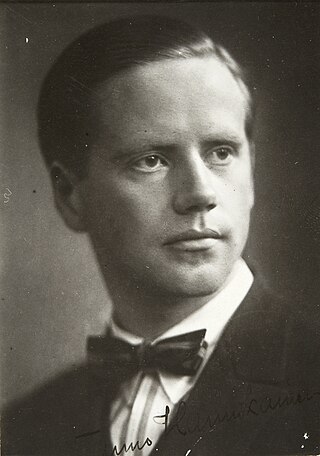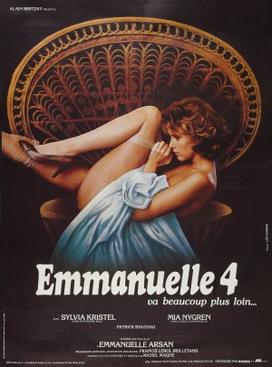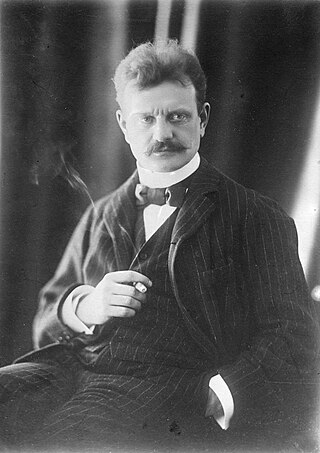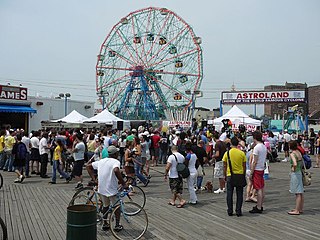Related Research Articles

Jean Sibelius was a Finnish composer of the late Romantic and early modern periods. He is widely regarded as his country's greatest composer, and his music is often credited with having helped Finland develop a stronger national identity when the country was struggling from several attempts at Russification in the late 19th century.

A Movie is a 1958 experimental collage film by American artist Bruce Conner. It combines pieces of found footage taken from various sources such as newsreels, soft-core pornography, and B movies, all set to a score featuring Ottorino Respighi's Pines of Rome.

The Bournemouth Symphony Orchestra (BSO) is an English orchestra, founded in 1893 and originally based in Bournemouth. With a remit to serve the South and South West of England, the BSO is administratively based in the adjacent town of Poole, since 1979. The orchestra is resident at Lighthouse in Poole, with other major concert series given at Portsmouth Guildhall, the Great Hall of Exeter University and Bristol Beacon. Shorter series are also given in Bournemouth and Basingstoke.

Paavo Allan Engelbert Berglund was a Finnish conductor and violinist.
Bruce Conner was an American artist who worked with assemblage, film, drawing, sculpture, painting, collage, and photography.

Allegro non troppo is a 1976 Italian animated film directed by Bruno Bozzetto. Featuring six pieces of classical music, the film is a parody of Walt Disney's 1940 feature film Fantasia, two of its segments being derived from the earlier film. The classical pieces are set to color animation, ranging from comedy to deep tragedy.
Kuolema (Death) is a drama by the Finnish writer Arvid Järnefelt, first performed on 2 December 1903. He revised the work in 1911.

Tauno Heikki Hannikainen was a Finnish cellist and conductor.
In filmmaking, found footage is the use of footage as a found object, appropriated for use in collage films, documentary films, mockumentary films and other works.
Valse triste is a 1904 orchestral piece by Jean Sibelius.

Emmanuelle 4 is 1984 English-language French film directed by Francis Leroi and Iris Letans. It is a sequel to 1977's Goodbye Emmanuelle, and the fourth installment in the film series of the same name. It is also the first film in the series to be filmed in English instead of French.

Franz von Vecsey was a Hungarian violinist and composer, who became a well-known virtuoso in Europe through the early 20th century. He made his first public debut at the age of 10. An accomplished violinist, he went onto perform concerts in the early twentieth century in the United Kingdom, Europe and both North America and South America.

Charles Giordano is an American keyboardist and accordionist. Giordano is known primarily for his work with Bruce Springsteen as a member of the E Street Band, replacing Danny Federici as the band's organist following the latter's serious illness and death in 2008 and as a member of Springsteen's The Sessions Band. He is also known for playing keyboards with Pat Benatar in the 1980s.

The Soothsayer is the seventh album by Wayne Shorter, recorded in 1965, but not released on Blue Note until 1979. The album features five originals by Shorter and an arrangement of Jean Sibelius' "Valse Triste". The featured musicians are trumpeter Freddie Hubbard, alto saxophonist James Spaulding, pianist McCoy Tyner, bassist Ron Carter and drummer Tony Williams.

Valse triste, Op. 44/1, is a short orchestral work by the Finnish composer Jean Sibelius. It was originally part of the incidental music he composed for his brother-in-law Arvid Järnefelt's 1903 play Kuolema (Death), but is far better known as a separate concert piece.

Coney Island has been featured in novels, films, television shows, cartoons, and theatrical plays.
Take the 5:10 to Dreamland is a 1976 short experimental film by Bruce Conner, using the technique of found footage. It is composed out of found images from the 1940s–1950s from different sources such as educational hm and soundtrack. It is closely related to Valse Triste, another found footage short by Bruce Conner.

Kuolema, JS 113, is incidental music for orchestra by Jean Sibelius for a play of that title by his brother-in-law Arvid Järnefelt, structured in six movements and originally scored for string orchestra, bass drum and a bell. He conducted the first performance at the Finnish National Theatre in Helsinki on 2 December 1903. He drew individual works from the score and revised them as:
Nichola Bruce is a British avant garde film director, cinematographer, screenwriter, and artist. Bruce uses an artistic approach to filmmaking alongside the use of digital technologies. Her use of digital film is accredited to the speed, creativity, and multi-layering that can be accessed through the technology. Daily Variety featured Bruce in their article "10 Digital Directors To Watch"(2000) and noted that Bruce takes her inspiration from the surrealists, Andrei Tarkovsky, and painting.

The Finnish composer Jean Sibelius (1865–1957) was one of the most important symphonists of the early twentieth century: his seven symphonies, written between 1899 and 1924, are the core of his oeuvre and stalwarts of the standard concert repertoire. Many of classical music's conductor–orchestra partnerships have recorded the complete set, colloquially known as the "Sibelius cycle". Specifically, the standard cycle includes:
References
- ↑ 2002 B.C. : Eight 16 mm films by Bruce Conner: 1964-1981-WorldCat.org
- ↑ An Evening with Celluloid|College of Liberal & Creative Arts
- ↑ Online Screening: Bruce Conner-SFMOMA
- ↑ MONTHLY FILM BULLETIN 1987|Valse Triste-BRUCE CONNER
- ↑ "Valse Triste".
- ↑ A.L. Rees; Bruce Conner and the found-footage film; Monthly Film Bulletin, 1987
- ↑ A Symposium on Bruce Conner | MoMA LIVE